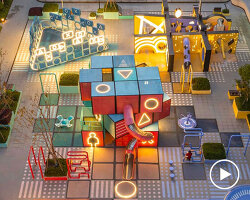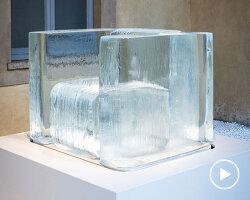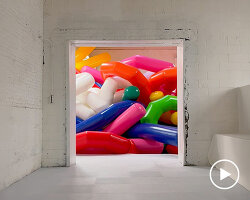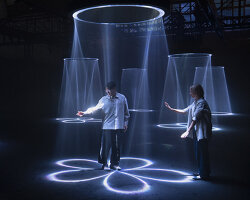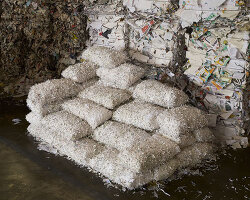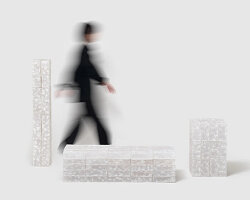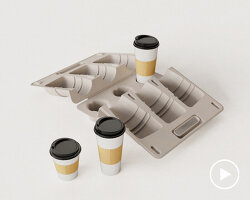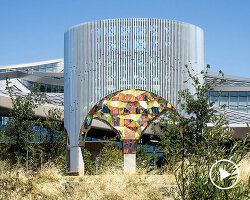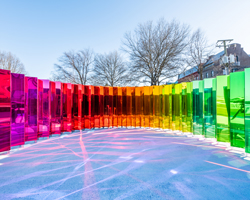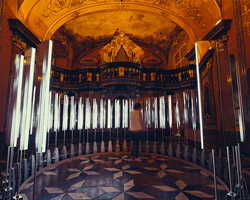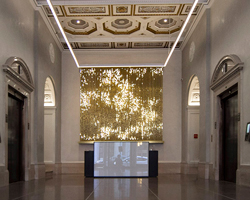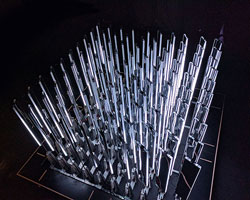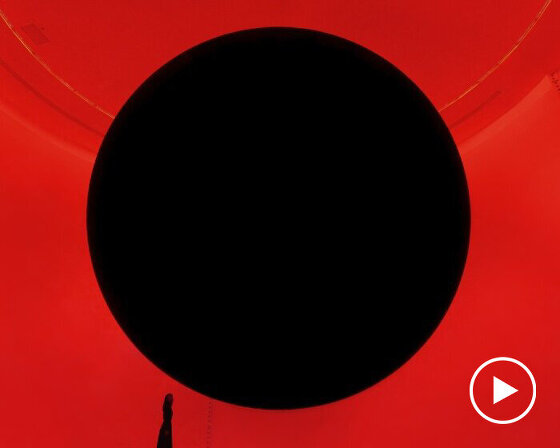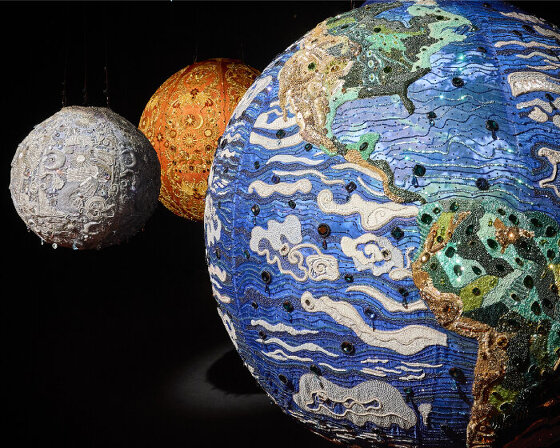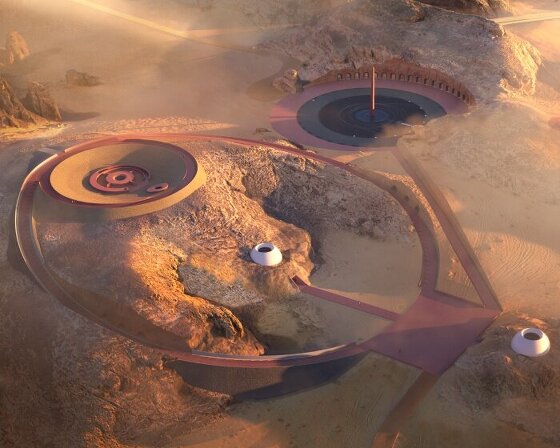gravity’s rainbow suspends in cincinnati
Like much of SOFTlab’s work, Gravity’s Rainbow is an exploration in how the studio can foreground and make apparent what are typically invisible forces within the world. In this suspended installation, gravity is used as a real-time form and pattern generator at the Zaha Hadid-designed Lois & Richard Rosenthal Center for Contemporary Art in downtown Cincinnati. Suspended within the museum’s striking concrete volumes, the intervention features laser-cut paper strips mapped with custom color gradients that constantly shift in response to their own weight, creating a visually playful interplay between the delicacy of the artwork and the monumental architecture surrounding them.
Each of the twelve clusters — eight in the main lobby and four in a double-height space — employs a bubble-packing algorithm to determine their placement and form. Using physics simulation software, the NYC-based team calculated the ideal curvature for the 408 strips of paper, totaling 6,500 linear feet. Color gradients were digitally mapped, printed, and laser-cut into 7,500 individual links, which were assembled into chain-like strips.
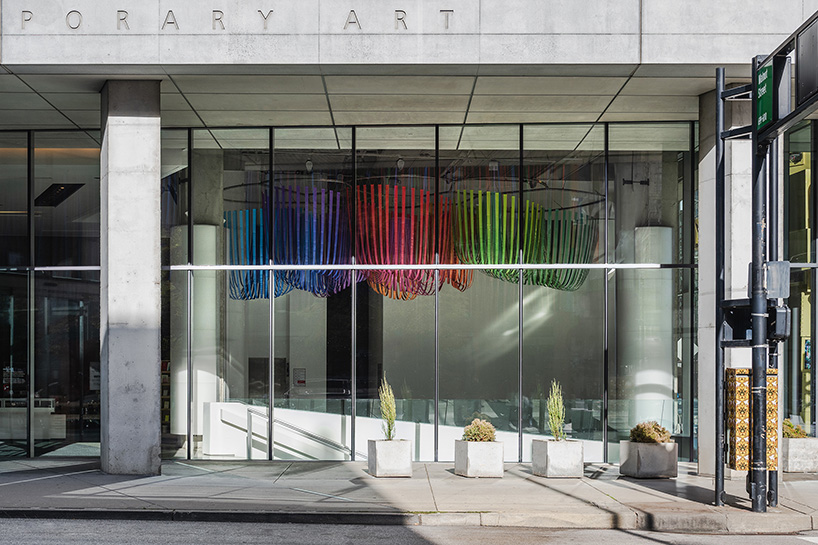
all images courtesy of SOFTlab
computer-controlled winches set the installation in motion
This concept is contextually apt for this building which too deals with gravity and lightness through a series of precariously floating concrete volumes. Stacked above an open public space, these volumes appear to be floating, now adorned with SOFTlab’s Gravity’s Rainbow. The work’s delicacy juxtaposes its surrounding while working with it to amplify the sense of gravity.
Their forms are driven by an array of computer-controlled winches that slowly shift the center of each cluster of paper strips. This movement causes the strips to constantly change their catenary shapes, allowing gravity to rework the billowing forms in real-time and progressively reveal their mapped color gradients. ‘The installations combine physics, color, and materiality to activate the public space in a visually playful way,’ shares the SOFTlab team.
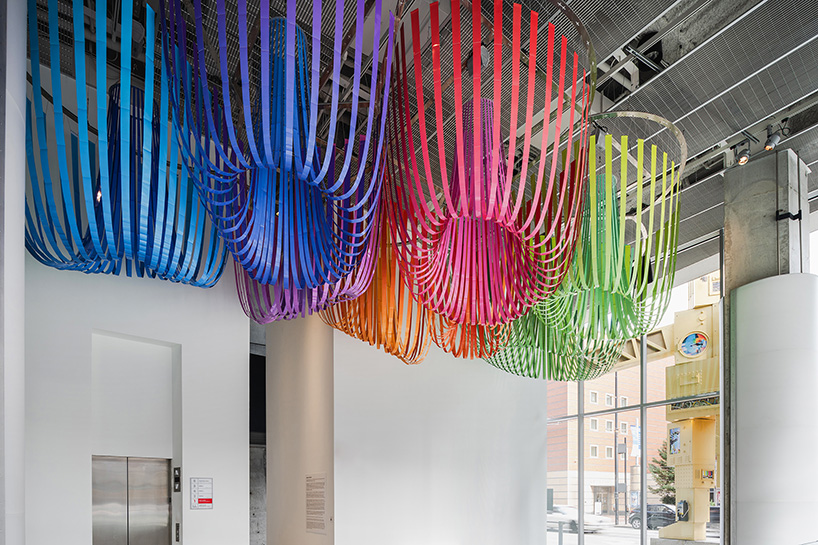
suspended in the glass corner of the Lois & Richard Rosenthal Center for Contemporary Art in downtown Cincinnati
softlab assembles vibrant paper strips into chain-like clusters
Inspired by Antonio Gaudí’s chain models and Frei Otto’s bubble experiments, Gravity’s Rainbow evolves beyond static modeling to function as a live experiment. In their case, material along with gravity were used to calculate naturally organic shape through a process of ‘form-finding.’ Here, SOFTlab are using both material experiments and custom software to create a suspended artwork that is constantly finding its ideal form. The team’s material experiments and custom software allow gravity to continually negotiate and reshape the suspended artwork, which in turn feels alive, introducing an organic contrast to the angular precision of the building’s architecture.
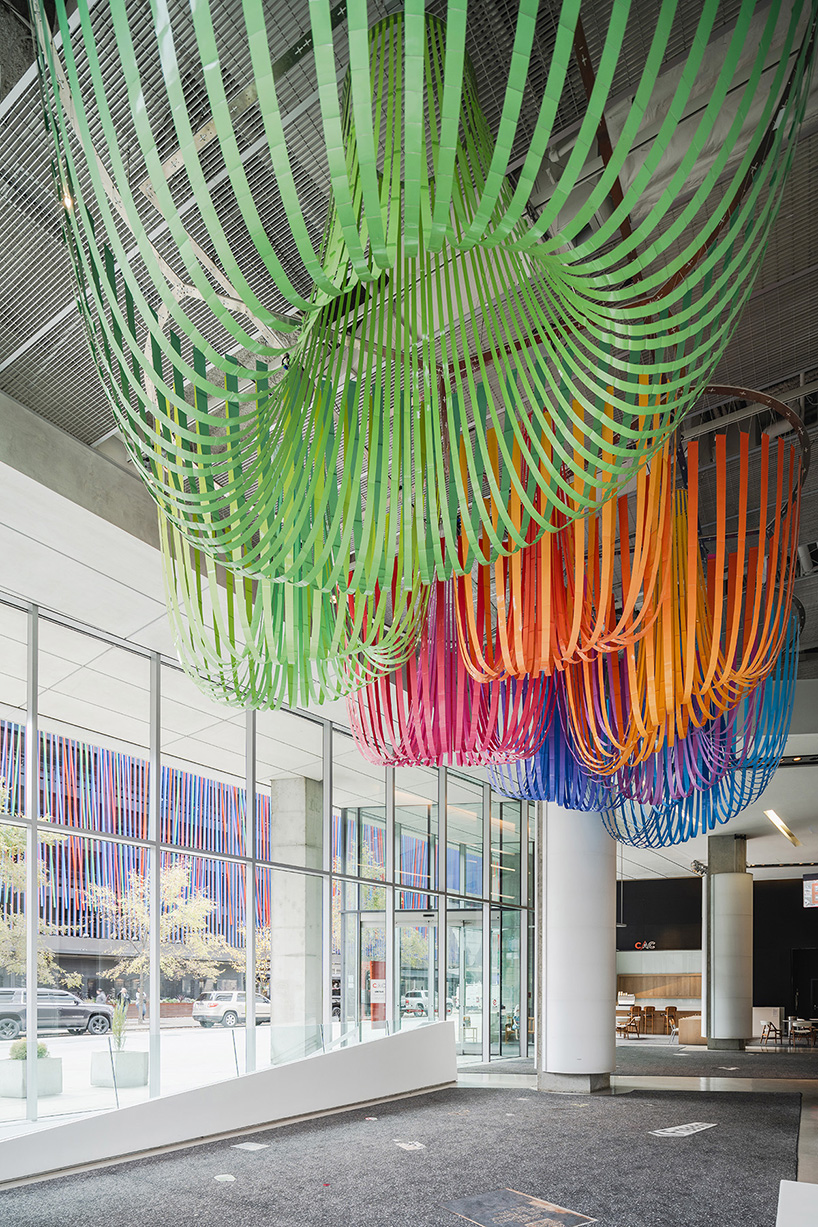
the installation in dialog with Julian Stanczak’s ‘Additional’ installed on the parking garage facade across the street
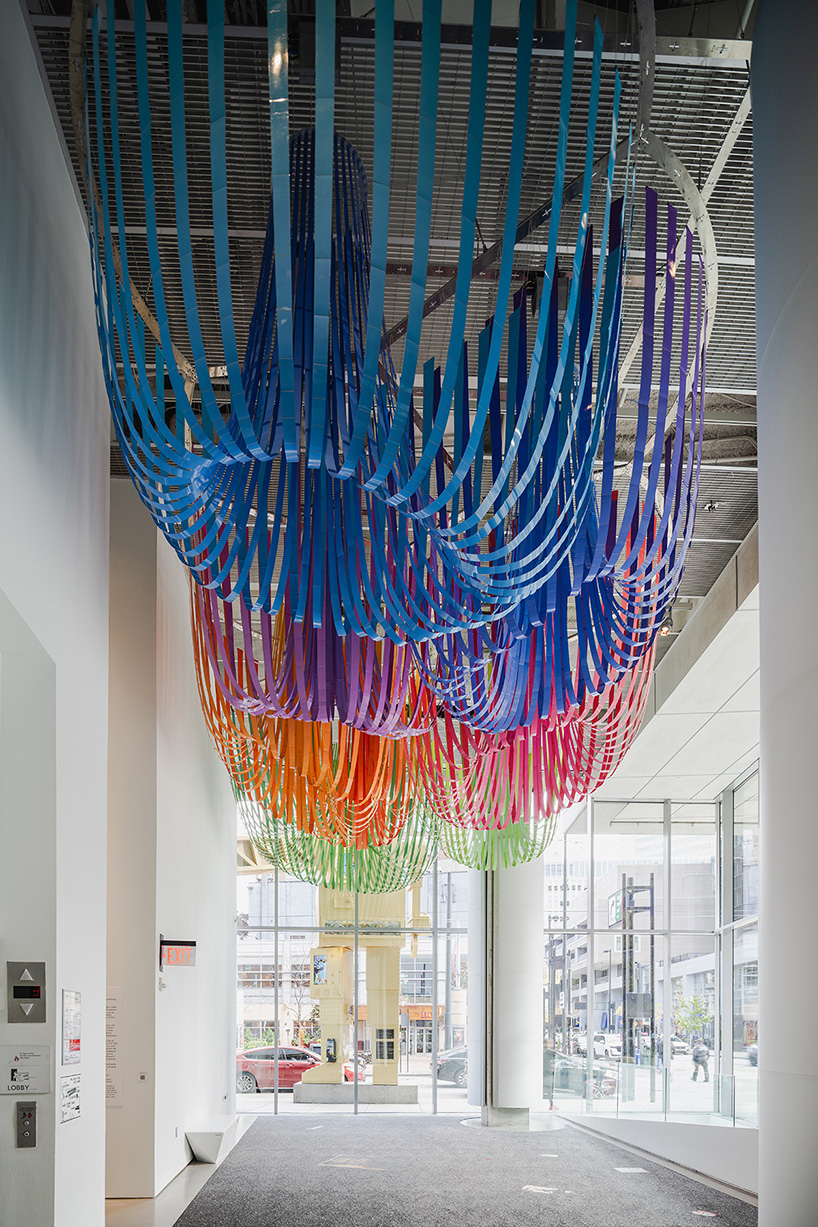
each hanging cluster is made of laser cut paper strips that are custom printed with a gradient of vibrant hues
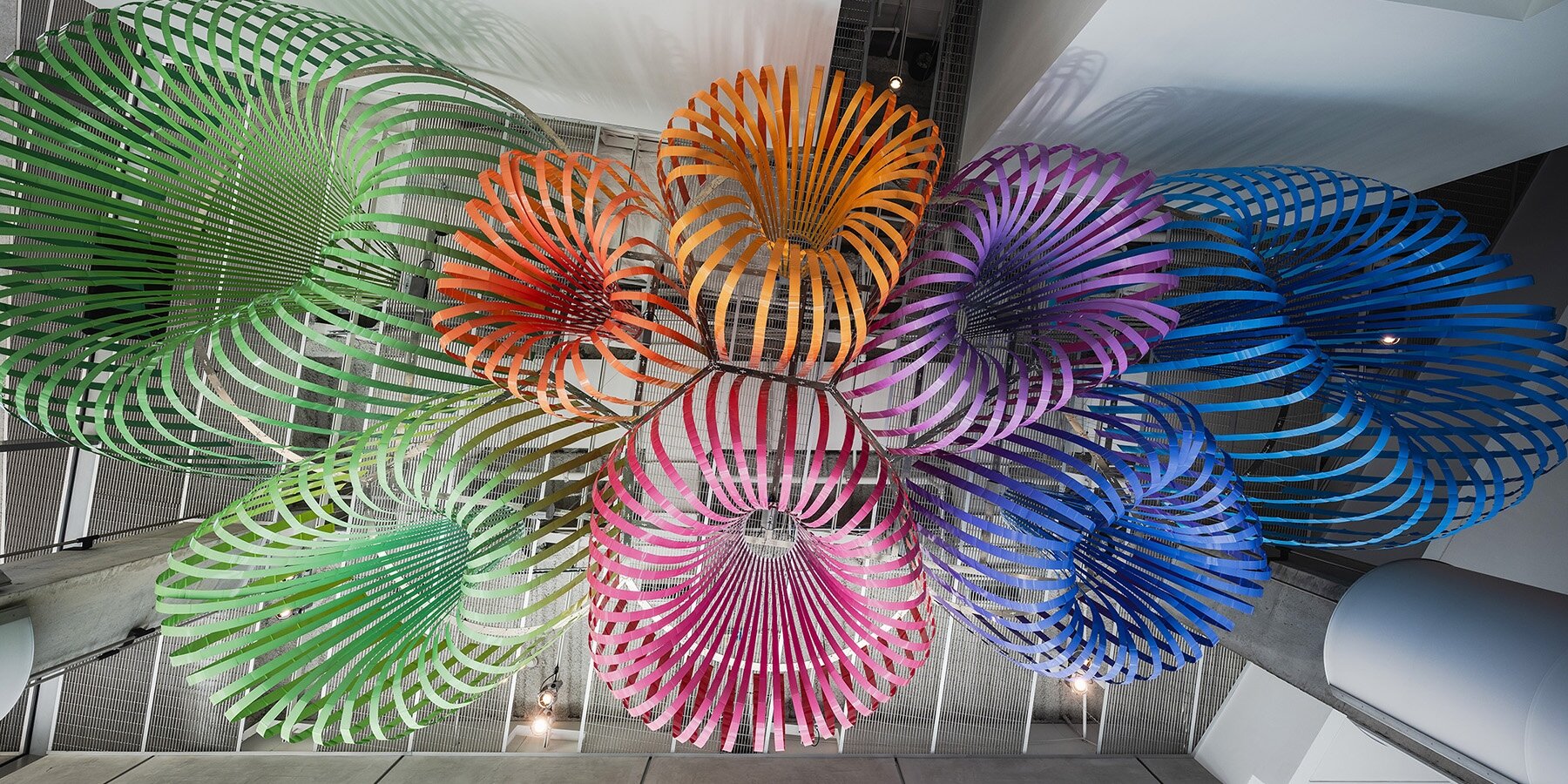
gradients are revealed as their center rings are raised up and down with computer-controlled winches
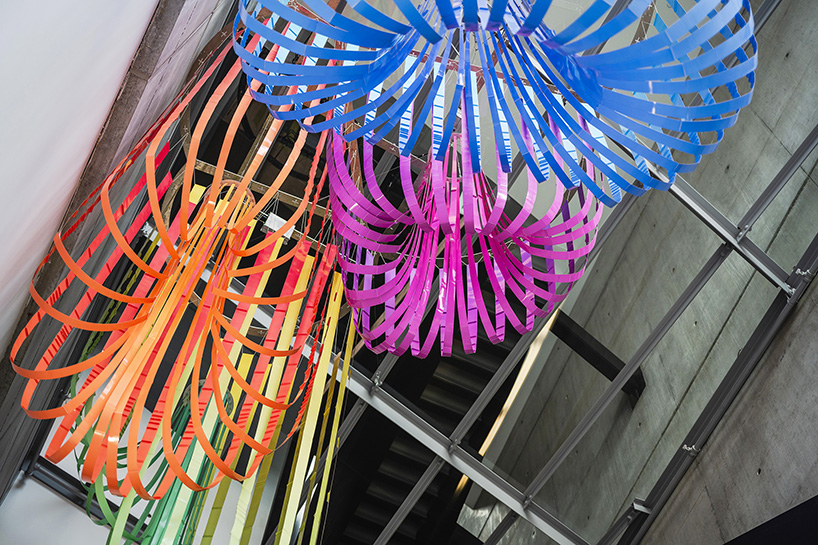
a visually playful interplay between the delicacy of the artwork and the stark architecture surrounding them
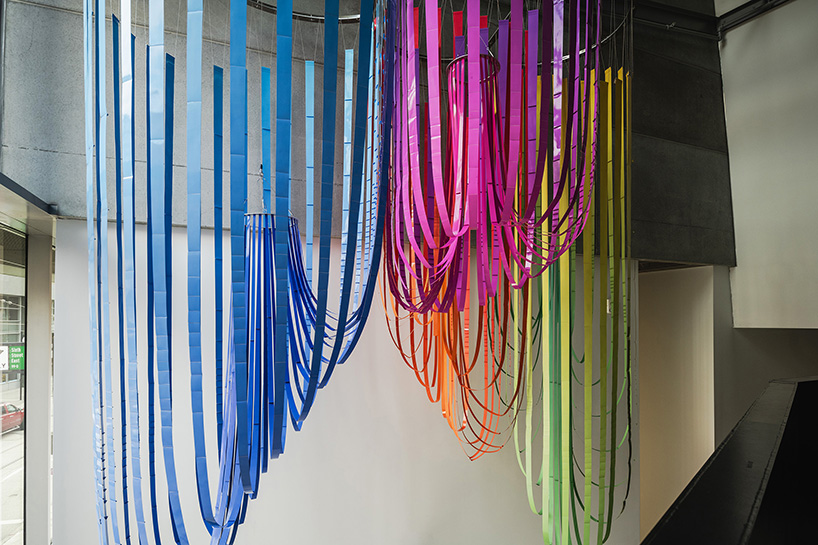
visitors get a direct view of the details of the paper and its mechanisms
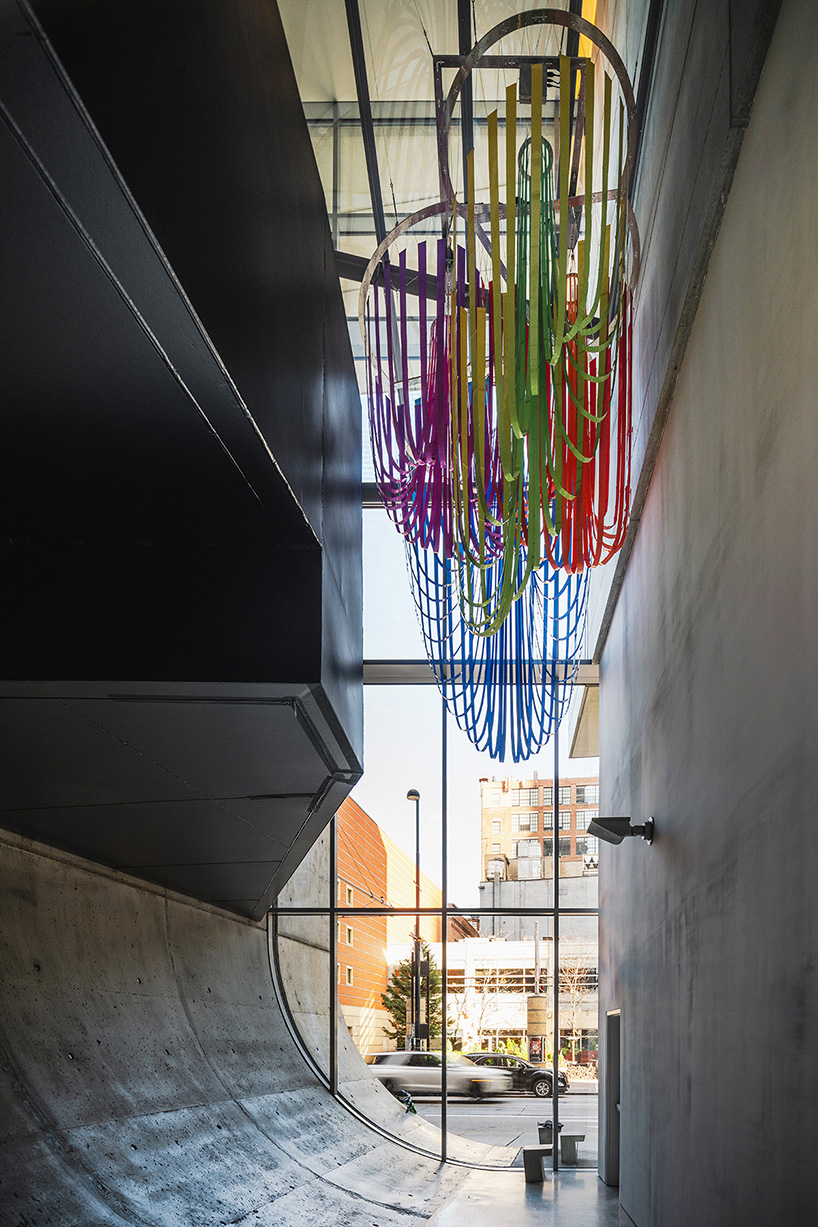
suspended in the double height space where Zaha Hadid’s ‘urban carpet’ transitions from the lobby
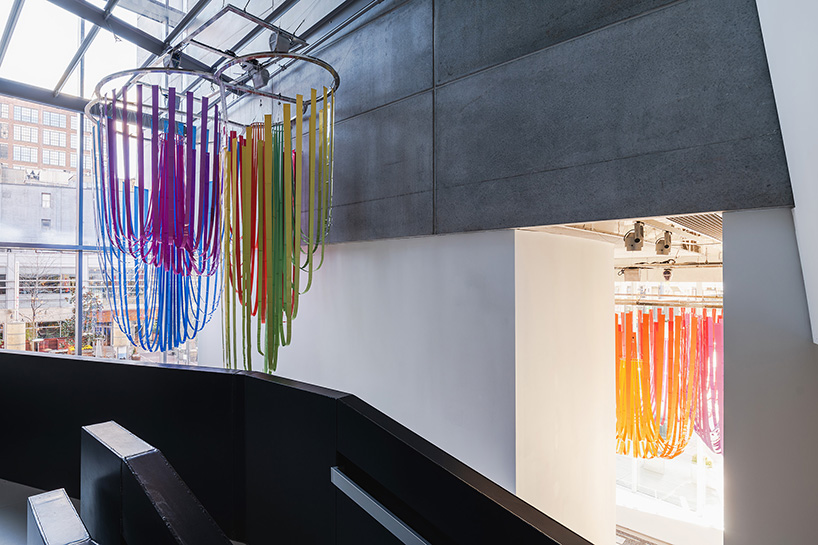
both installations in view
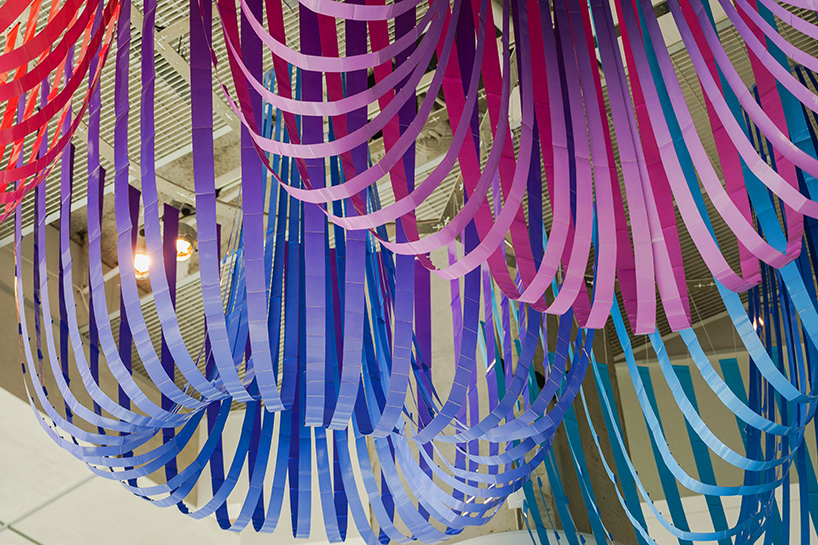
their motion creates pattern interference and moiré patterns, visually animating the space
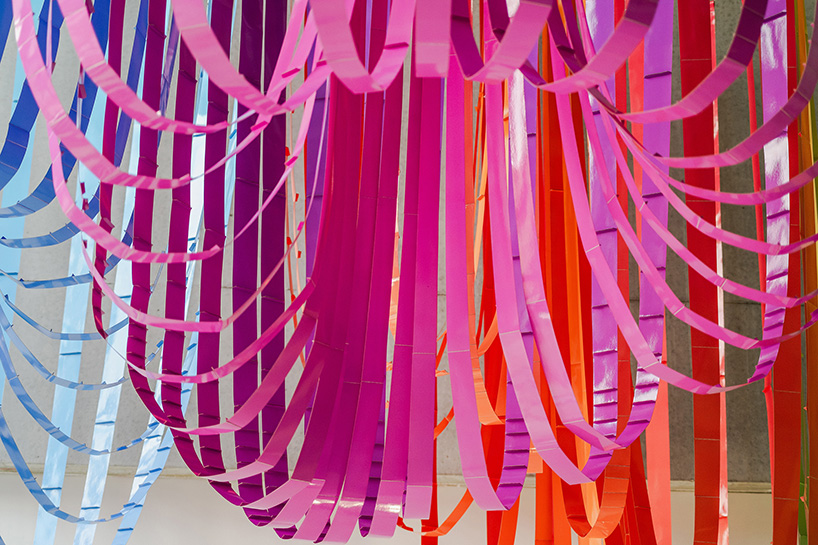
paper strips are laser cut into segments of varying length based on their ideal curvature
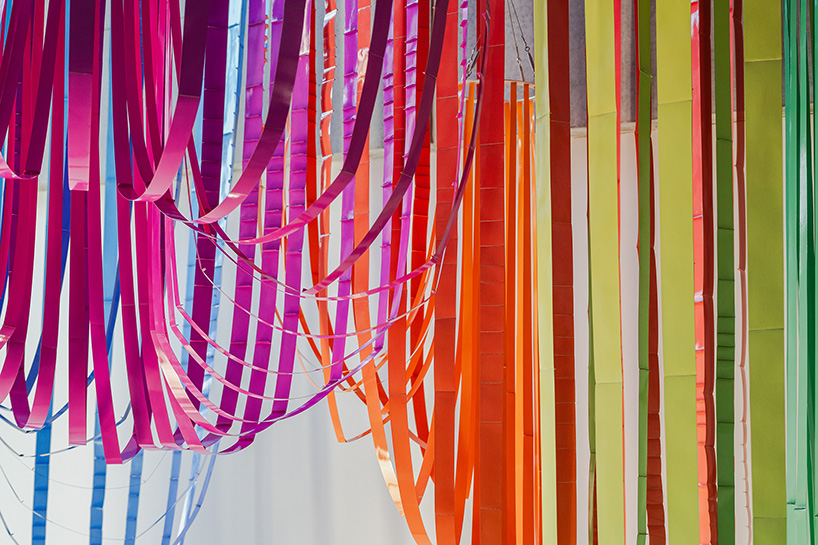
acting as a chain with different sized links, folding in unexpected ways that expose the materiality
project info:
name: Gravity’s Rainbow
designer: SOFTlab | @softlab
location: Lois & Richard Rosenthal Center for Contemporary Art, Cincinnati, USA
designboom has received this project from our DIY submissions feature, where we welcome our readers to submit their own work for publication. see more project submissions from our readers here.
edited by: ravail khan | designboom

